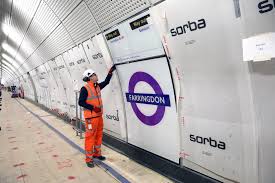Understanding the Elizabeth Line: Transforming London Transport

Introduction
The Elizabeth Line, a vital addition to London’s transport infrastructure, officially opened to the public on May 24, 2022. This modern railway line connects central London with the outer suburbs and significantly enhances travel efficiency across the capital. The line’s importance lies in its potential to ease congestion on existing transport networks and stimulate economic growth in underserved areas.
The Line’s Route and Features
The Elizabeth Line stretches over 60 miles from Reading and Heathrow in the west to Shenfield and Abbey Wood in the east. With more than 40 stations, it provides direct links between key locations including Paddington, Liverpool Street, and Canary Wharf. The line is designed to reduce travel times significantly; for example, the journey from Paddington to Heathrow now takes just 30 minutes, compared to over an hour via previous options.
One key feature of the Elizabeth Line is its state-of-the-art train fleet, which includes 70 new electric trains capable of carrying up to 1,500 passengers each. The trains offer enhanced accessibility, air-conditioning, and real-time passenger information systems, contributing to a more comfortable travel experience. The construction of new station facilities also brings modern amenities to passengers.
Current Operations and Impact
Currently, the Elizabeth Line operates an extensive timetable, with trains running every five minutes during peak hours. The line’s ability to accommodate large volumes of passengers has started to alleviate congestion on the London Underground and National Rail services, especially in busy corridors.
Moreover, the Elizabeth Line has opened up new areas for economic development. With improved transport connectivity, businesses in areas once considered remote can attract a broader customer base, leading to increased investment opportunities. Boroughs along the line can expect substantial growth in property values and local economies due to enhanced accessibility.
Conclusion
In conclusion, the Elizabeth Line is a significant advancement for London’s public transport network. As it continues to operate fully and integrate into the city’s transport matrix, it is likely to enhance travel efficiency, stimulate regional economic growth, and improve the quality of life for residents. The ongoing success of this line may serve as a model for future transport projects, setting a precedent for sustainability and accessibility in urban transit solutions.






